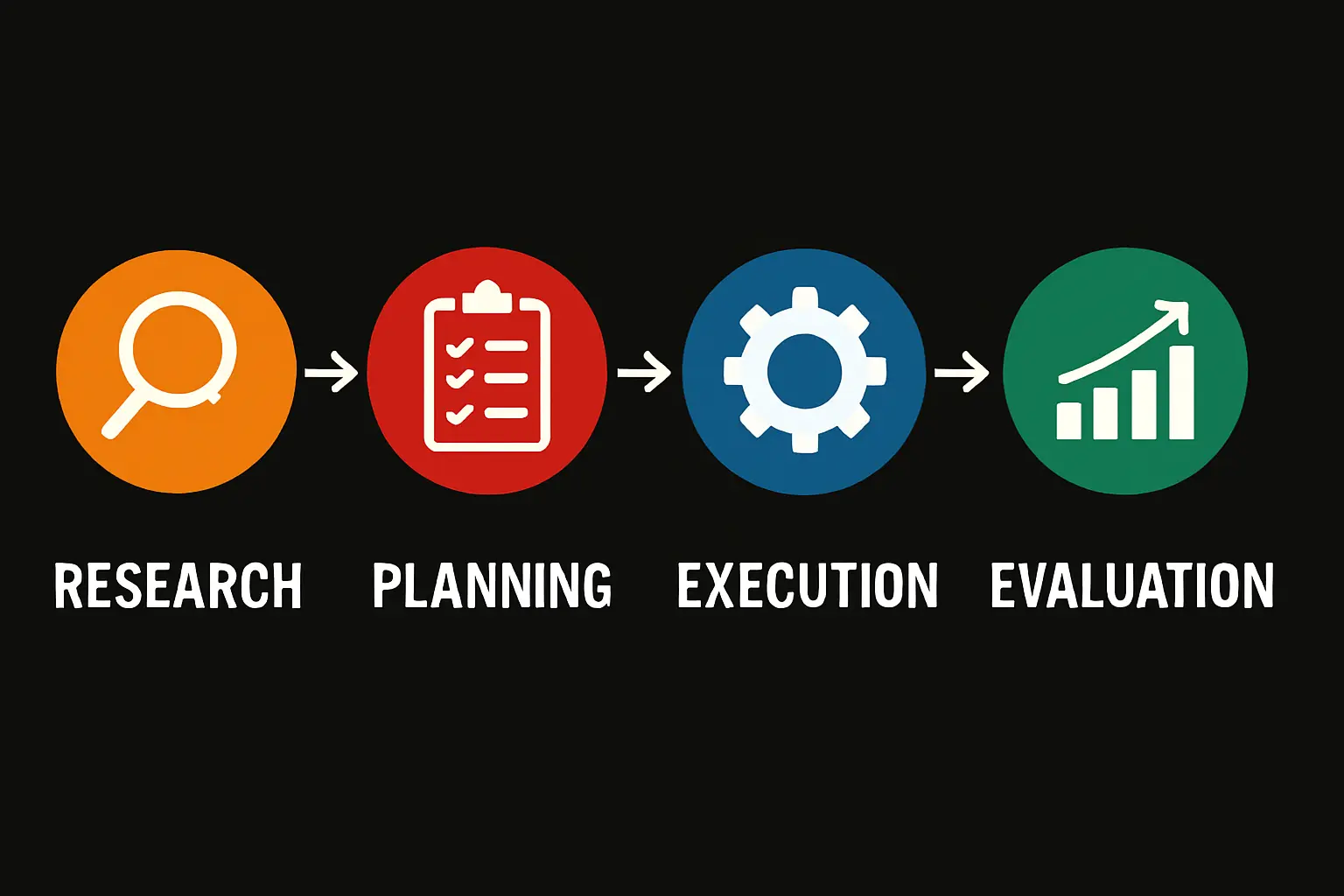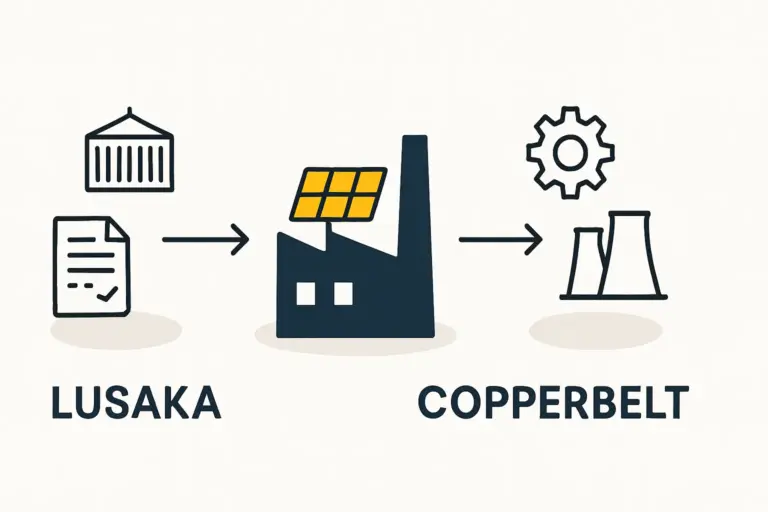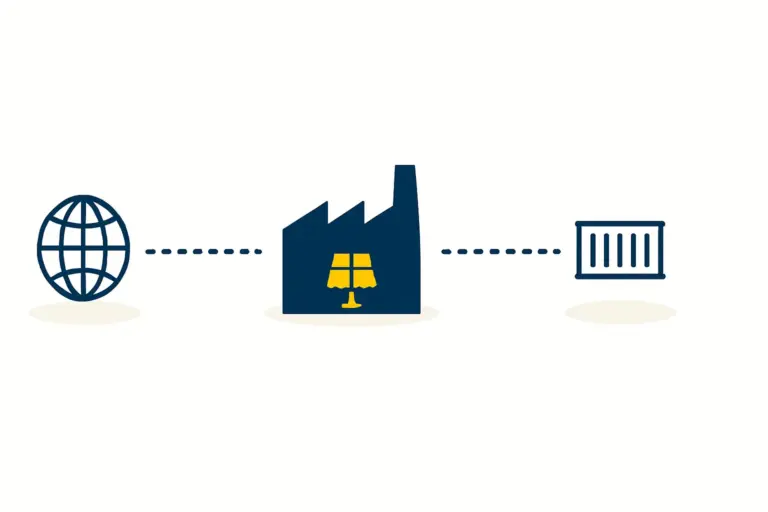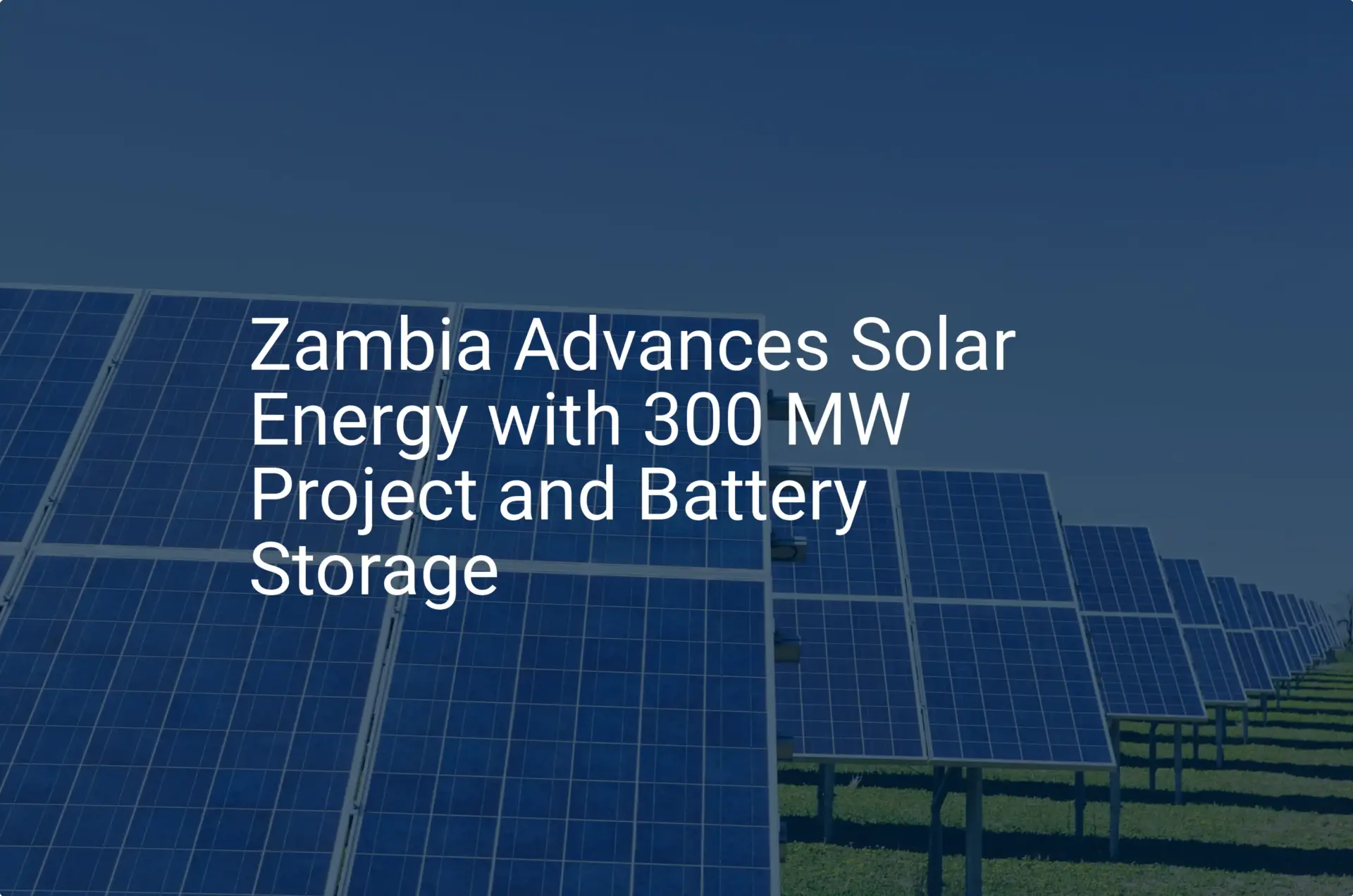Imagine your new solar module production line is in full operation. The laminator has just finished a cycle, and the automated stringer is meticulously soldering cells. Suddenly, the lights flicker and the machinery halts. The entire factory goes silent. This is not a minor inconvenience; it’s a costly production standstill caused by a grid power outage, a scenario all too common in many developing economies. For an entrepreneur planning to establish a solar factory in Zambia, understanding and mitigating this risk is not just an operational detail—it’s fundamental to the business case.
Zambia’s national grid faces significant challenges. The country derives approximately 86% of its electricity from hydropower, primarily from the Kariba and Kafue Gorge dams. This heavy reliance makes the power supply vulnerable to climate change, particularly the recurring droughts that have plagued Southern Africa. During severe dry spells, the country can face a power deficit of up to 1,000 megawatts, leading to widespread and prolonged load shedding that can last for hours each day.
This article outlines how to plan your factory’s power infrastructure to ensure uninterrupted operations, turning a potential vulnerability into a source of strategic strength.
The Non-Negotiable Need for On-Site Power Generation
Relying solely on the national grid for a high-value manufacturing operation in Zambia is an untenable business risk. The sensitive, high-throughput machinery in a solar module factory requires a stable and continuous power supply. An abrupt shutdown can lead to material waste, equipment damage, and significant production delays, directly impacting revenue and profitability.
Therefore, planning for on-site power generation is an essential first step. The primary options are diesel generators and a captive solar-plus-storage system, often used in a hybrid configuration for maximum reliability.
Baseline Security: Sizing a Diesel Generator
A diesel generator is the most common and straightforward backup power solution. It provides reliable on-demand electricity, ensuring that production can continue or be safely wound down during a grid failure.
Calculating Power Requirements
The first step is to determine the factory’s peak power demand. This involves summing the power consumption of all essential solar module manufacturing equipment, including:
- Cell Stringer: The machine that solders solar cells together into strings.
- Laminator: A highly energy-intensive machine that uses heat and pressure to encapsulate the module.
- Framing Station: The equipment used to attach the aluminum frame.
- Testing Equipment: Simulators and electroluminescence (EL) testers.
- Factory Essentials: Lighting, HVAC systems, and compressed air units.
For a typical semi-automated factory with an annual capacity of 25–50 MW, the peak power demand generally falls between 350 and 500 kVA (kilovolt-amperes). To handle initial power surges from motors starting up, standard practice is to select a generator with a capacity at least 25% higher than the calculated peak load. For a facility of this scale, a generator rated between 500 and 650 kVA would therefore be a prudent choice.
While effective, a diesel generator comes with ongoing operational costs, including fuel procurement, regular maintenance, and exposure to volatile diesel prices. It serves as an essential insurance policy, but it’s best viewed as one component of a more sophisticated energy strategy.
The Strategic Advantage: A Captive Solar and Storage System
For a solar module manufacturer, installing a dedicated solar power system with battery storage presents a uniquely powerful business case. This approach, known as a captive power plant, allows the business to use the very product it creates to power its operations.
This strategy offers far more than just backup power; it creates a vertically integrated energy ecosystem with compelling financial and branding benefits.
Components of a Captive System
-
Solar PV Array: An array of solar modules, identical to those the factory produces, is installed on the factory rooftop or adjacent land. This array generates electricity during daylight hours.
-
Battery Energy Storage System (BESS): A large battery system stores excess solar energy generated during the day. This stored energy can then power the factory after sunset, during peak demand periods, or during a grid outage.
-
Hybrid Inverter & Control System: This is the ‘brain’ of the system, managing the flow of electricity between the solar array, the batteries, the factory load, and the national grid.
The Business Case
A captive solar-plus-storage system requires a significant upfront investment, but it’s one that warrants careful evaluation in any comprehensive business plan. The long-term advantages are substantial:
- Operational Resilience: The factory becomes largely independent of grid instability and load shedding, ensuring consistent production schedules.
- Reduced Operating Costs: By generating its own electricity, the factory significantly reduces its reliance on grid power, which is subject to rising tariffs, and minimizes expensive diesel fuel consumption.
- Brand Enhancement: A solar factory powered by its own solar panels is a powerful marketing tool. It demonstrates the product’s quality and reliability in a real-world industrial application, serving as a permanent showcase for potential customers.
- Future-Proofing: As energy costs continue to rise and grid instability persists, on-site generation becomes an increasingly valuable asset, providing a competitive edge.
A Hybrid Approach: The Ultimate in Reliability
The most robust solution for a solar factory in Zambia is a hybrid power system that integrates all three sources: the national grid, a captive solar-plus-storage system, and a diesel generator.
This configuration offers layered redundancy:
- Primary Power: The solar-plus-storage system supplies the majority of the factory’s energy needs, maximizing cost savings and sustainability.
- Secondary Power: The national grid supplements power when solar generation is low or battery storage is depleted.
- Tertiary (Backup) Power: The diesel generator acts as the final failsafe, ready to take over during extended grid outages that coincide with prolonged periods of inclement weather.
A diagram showing a hybrid power system (Grid, Solar+BESS, Generator) feeding into a factory.

Experience from J.v.G. Technology GmbH’s turnkey projects in regions with similar energy challenges shows that integrating this power infrastructure planning from the outset is crucial. It influences the factory layout, the overall project budget, and the long-term operational profitability of the venture.
Frequently Asked Questions (FAQ)
What size generator is recommended for a startup solar factory?
For a 25–50 MW annual capacity line, a generator in the 500–650 kVA range is a typical starting point. However, a detailed load calculation based on the specific equipment list is essential for precise sizing.
Is a solar-plus-storage system more expensive than a generator?
Yes, the initial capital investment for a solar and battery system is significantly higher than for a diesel generator alone. However, its operating costs are negligible, and it generates substantial savings on electricity and fuel bills over its lifetime. The return on investment should be analyzed within the complete business plan.
Can the factory run entirely off-grid with this system?
While technically possible, remaining grid-connected is usually more practical and cost-effective. An entirely off-grid system would require an oversized solar array and battery bank to handle several consecutive days of poor weather, which substantially increases costs. The grid serves as a useful, low-cost backup.
How does battery storage work for a factory?
A Battery Energy Storage System (BESS) stores direct current (DC) electricity generated by the solar panels. When the factory needs power, an inverter converts this DC electricity into alternating current (AC) suitable for industrial machinery. The system’s controller intelligently decides when to charge the batteries (e.g., during peak sun) and when to discharge them (e.g., at night or during a grid outage).
Does this infrastructure planning affect the project timeline?
Yes, it’s critical to incorporate power infrastructure into the initial planning phase. Sourcing and installing large generators, solar arrays, and battery systems require lead time and should be coordinated with the factory’s construction and commissioning schedule.

For entrepreneurs venturing into solar manufacturing in Zambia, planning for power stability is as important as selecting the right production machinery. By proactively designing a robust, hybrid power system, a factory owner can mitigate the risks of an unstable grid, control long-term energy costs, and build a more resilient and profitable business. This foresight transforms a significant regional challenge into a lasting competitive advantage.







